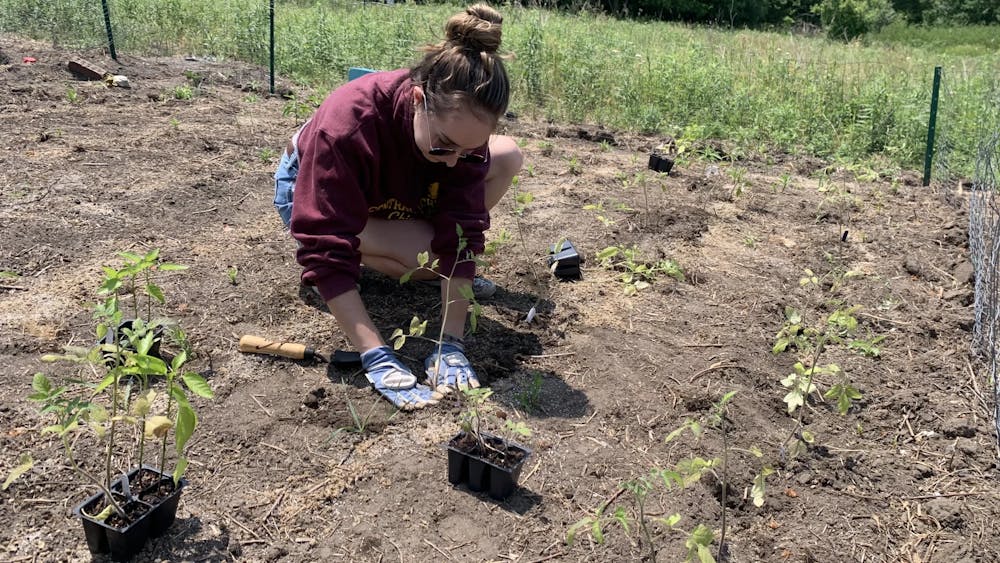Students experience what it would be like to have DeafBlindness

St. Johns senior Hannah Janeski sits in her chair during the deaf blind simulations held on Sept. 27, 2018 in Heath Professions room 2150. (CM-Life File Photo)
To bring awareness to life without sight or sound, DeafBlind Central hosted three deaf blind simulations at the Health Profession Building on Sept. 27.
DBC director Beth Kennedy and American Sign Language teacher Cheryl Barden navigated students through the simulations.
“Deaf Blindness is a disability of access,” Kennedy said. “These simulations are to get you to realize how much can be missed when you don’t have the appropriate support.”
For the first session, students were partnered up and given ear plugs, a pair of noise canceling headphones and a blindfold. The student who was not using the simulation equipment was leading the other around the building.
After the first session, Bay City sophomore, Aviana Cuellar, said the simulation was eye-opening.
“This (simulation) really helped me gain a better understanding of what a deaf or blind individual goes through on a daily basis,” Cuellar said.
During the second session, there were two different simulations happening at the same time. In the first one, students were given ear plugs, noise cancelling headphones, and tunnel vision glasses. Students were then divided into groups of four and given a question to ask with specific directions on how to ask it.
There were four different ways students were expected to communicate which including yelling, whispering, speaking in regular tone, and signing. With the tunnel vision glasses made of black paper with a hole smaller than a pea, students were only able to see directly in front of them. Adding that to the distorted sound, the simple task proved to be extremely difficult.
Next, students were put in a small circle and given balls to throw to one another. Once several passes were made, the circle was made bigger.
In doing this, students were able to experience first hand how challenging it is to have little sight and sound ability when a lot is happening around you. If a student was not looking in the direction of the one throwing the ball, they either got hit or didn't get the pass. When the circle got bigger, determining how hard to throw and catching the ball became more challenging.
In the other simulation, students were paired up and given ear plugs, a pair of noise canceling headphones, a blindfold and a container of Play-Doh. While one student was "deaf and blind," the other was guiding them to make the shape of a hand out of Play-Doh. Once the hand was made, the partners switched roles. Then, the non-"deafblind" student guided the other to make a face.
Macomb junior, Kristina Slifco participated in the second session and did the simulation with groups of four.
“I was very shocked with how difficult it became when they began adding more challenging features, like saying I could only ask my question by signing,” Slifco said. “I think, as an ASL student, it was a very cool experience because I got to see what someone goes through when they need to sign to communicate.”
The last session was a mixture of all the simulations together. These simulations offered two different points of view. While one person was experiencing what it would be like to be deaf and blind, the other got to see what it is like helping someone who is.
Although, deaf awareness week is coming to an end there are still other events to come like the American Sign Language Society treasure hunt on Friday and the Community Deaf panel on Saturday.






